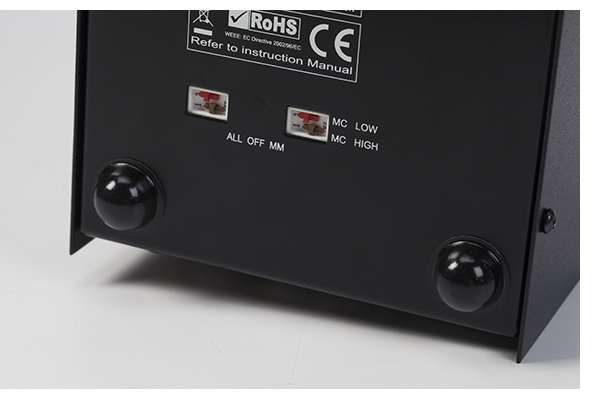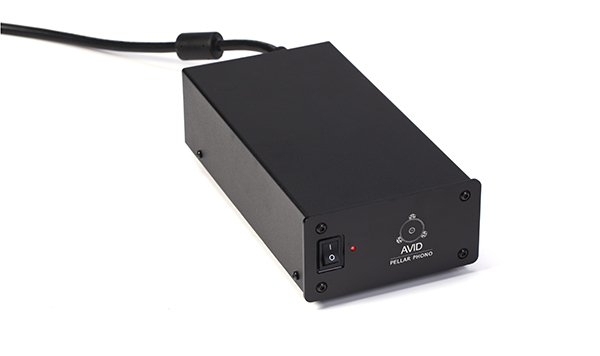AVID Pellar Phonostage
AVID, a Kimbolton, UK-based firm has been turning out some mighty impressive turntables for more than a decade now, and their recent pursuit of phono preamplifier designs, equally so.
AVID’s mission statement is simply this: “The truth, nothing more, nothing less.” Of course, the “truth” is one of the most elusive subjects in the audio world. Is it the sonic realism of a live performance, the accurate reproduction of a studio master tape or something else? If beauty lies in the eye of the beholder, then audio truth resides in the ear of the listener. From my perspective, audio truth is told when the essence of a recording, good, bad or indifferent, is revealed without additions or subtractions. Having lived with many (and I mean many) phonostages at widely ranging price points, I now investigate the baby of the AVID family, and see how much truth the Pellar serves up.
AVID: A Very Interesting Design.
Before getting the Pellar phonostage into my system, a look under the hood reveals a straightforward, unbalanced circuit, and high quality parts on the circuit board of this all solid-state design. The compact chassis (2.75” (H) x 4” (W) x 9” (D)] has a single power switch on the front panel and is a rather solid little brick, weighing 3.5 pounds. The rear panel has a power cord receptacle, stereo RCA outputs, and a tandem of RCA inputs, with the upper pair of RCA jacks used for impedance loading, much like the Naim Superline does.
The Pellar arrives with two 500 Ohm RCA plugs for this purpose, and this should work with a wide range of phono cartridges. Other values are available on request, or you can make your own. The default impedance without the plugs installed is 47K ohms. The turntable is connected to the Pellar via the lower set of inputs. Gain can be easily adjusted by sliding a pair of dipswitches from 40 dB (adequate for most MM cartridges) to 60 dB or 70 dB (adequate for most lower output MC cartridges). Considering the complexity of many high-end phonostages, the Pellar is simplicity itself, resulting in a very quick unbox to enjoy music time.
 Staging the Phonostage
Staging the Phonostage
Since the Pellar is billed as AVID’s entry level phonostage at $1,149 (the top-of-the-heap two-box Pulsare II will set you back $7,000), I mated it with my modified VPI Aries with outboard flywheel and JMW 10.5i tonearm. For this review, I alternated two stereo MC cartridges, the higher output Clearaudio Stradivari (0.8 mv @ 5 cm/sec) and the low output Dynavector DV-20×2 (0.3 mv @ 5 cm/sec). A Benz Micro Ruby 3H (0.7 mv @ 5 cm/sec) handled the mono LPs. After a 48 hour power up, serious listening began in earnest.
Retrieval of detail is a good measure of a phonostage’s noise floor. Simply put, the lower the noise floor the more detail you get from the grooves. Sheila, an intimate duet between jazz vocalist Sheila Jordan and bassist Arild Andersen (SteepleChase), is an easy way to evaluate this aspect of phonostage performance. The proof in the pudding is hearing Sheila’s husky voice move toward and away from the mike and catching the short breaths that she takes between phrases. Meanwhile, you should also hear the varying harmonics of Andersen’s finger work on his bass. The Pellar does a fantastic job on musical fundamentals.
Ry Cooder’s Jazz, an unabashed homage to ragtime and Dixieland music is a great example of a studio recording not victim of excess tweaking and one with with great recreation of voice and each of the small group of instruments involved. The opening track “Big Bad Bill (Is Sweet William Now) clearly illustrates the Pellar’s ability to keep the vocals on track with all of the horns spread out across the soundstage, giving the illusion of these players in the room.
Encouraged by the ease at which the Pellar handled this favorite, the big stuff was next. The classic recording of the Verdi Requiem with Sir Georg Solti leading a fabulous quartet of soloists, the Musikverein chorus and the Vienna Philharmonic Orchestra proved another excellent challenge that the Pellar aced. The Decca tonmeisters have always known how to get the most out of a huge surge of orchestral and vocal music. The Pellar never feels overwhelmed with “Kyrie” section, one of the most dynamic choral passages ever written – a tough challenge for any analog front end.
If I had to pick one mono LP to demonstrate how good a phonostage can make mono records sound, it would be the 45 RPM reissue of Ella and Louis (Analogue Productions). Not a dud cut on the record and what presence Ella Fitzgerald and Louis Armstrong have! The Pellar mated to the Benz Micro Ruby 3H gets me very close to the vocal cords of these two jazz legends, and excited
What Do You Get For A G-Note?
Occasionally one of my audio buddies will ask me, “hey, I’m getting back into analog, so how much should I spend on a phonostage?” The Pellar’s resolving power and soundstage recreation might not reach the highest sound realms of my reference Pass XP-25 (to be had at ten times the price!) but it does provide a genuine peek at what audio heaven sounds like. You get a lot of what the audio in-crowd venerates with enough coin left over to buy… a whole bunch of vinyl records. The AVID Pellar becomes my definite contender for one of the audio bargains of the year and an easy, suggestion for a friend who wants to rediscover the magic residing in those black vinyl grooves, that won’t break the bank. – Lawrence Devoe
 Second Listen:
Second Listen:
Having spent a fair amount of time with both of AVID’s more expensive phono stages, the Pulsus and the first generation Pulsare, there is definitely a family resemblance here. All three phonostages have a similar sound: a natural tonal balance with good dynamics and a low noise floor. Much like the AVID turntables, each phonostage in the range has increasingly more dynamic punch, low level detail and low frequency heft.
That being said, the Pellar is remarkably good for $1,149. I gave it a spin with a few of the tables in my stable here, the Linn LP-12/Shure V15 mxvr and the AVID Ingenium/SME 309/Ortofon 2M Black, both a good fit for the MM side of the equation. As for MC, the Pellar works phenomenally well with the $379 Denon 103DL. Combined with the Ingenium, this is a tough combination to beat for a prudent audiophile. You will need to get 100-ohm loading plugs or get out the soldering iron, however.
Perhaps the best part of owning the AVID Pellar is that you can just turn it on, forget about it, and enjoy your vinyl collection, no matter what turntable you have. Highly recommended. -Jeff Dorgay
AVID Pellar Phono Preamplifier
MSRP: $1,149 (USD)
Manufacturer: AVID HIFI
Contact: www.avidhifi.co.uk (UK and Europe)
www.musicdirect.com (US)
PERIPHERALS
- Preamplifier: Pass Labs X-30
- Amplifier: Pass Labs XA-100.5
- Speakers: Martin Logan CLX
- Power Conditioner: Running Springs Audio Dmitri, Maxim
- Cables: Nordost Valhalla, Odin
- Power Cords: Nordost Valhalla, Odin


